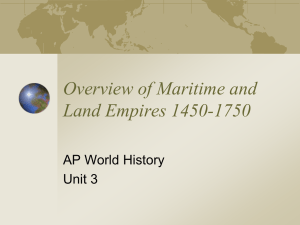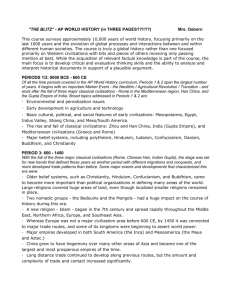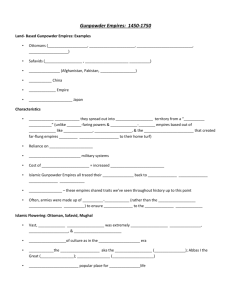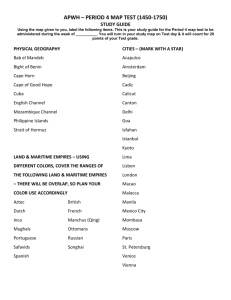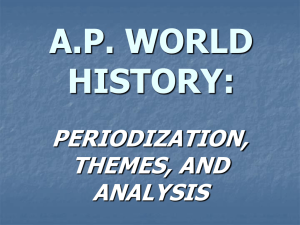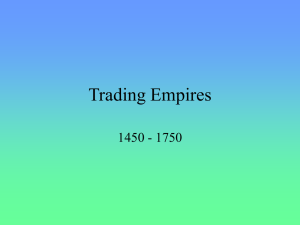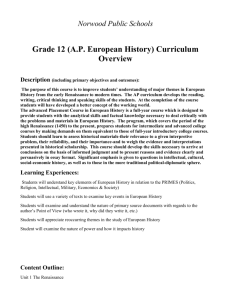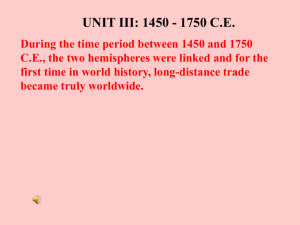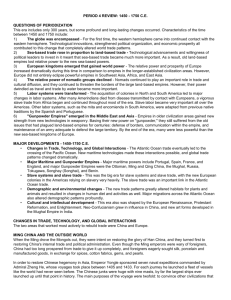File - Ms. Allen's History Class Site
advertisement
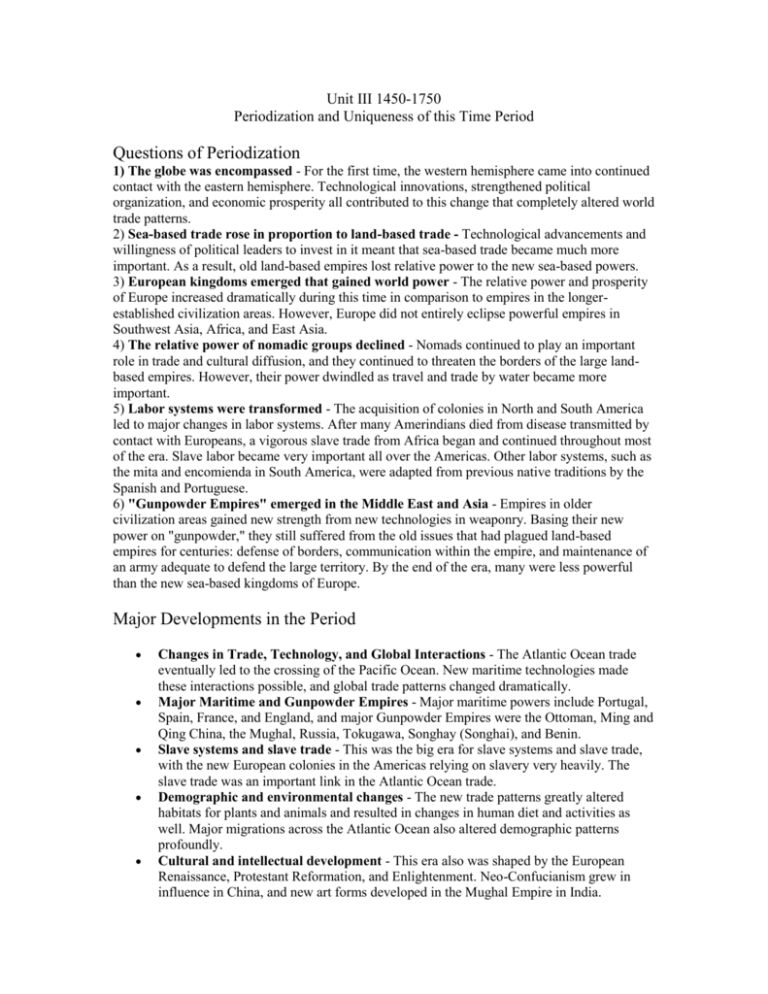
Unit III 1450-1750 Periodization and Uniqueness of this Time Period Questions of Periodization 1) The globe was encompassed - For the first time, the western hemisphere came into continued contact with the eastern hemisphere. Technological innovations, strengthened political organization, and economic prosperity all contributed to this change that completely altered world trade patterns. 2) Sea-based trade rose in proportion to land-based trade - Technological advancements and willingness of political leaders to invest in it meant that sea-based trade became much more important. As a result, old land-based empires lost relative power to the new sea-based powers. 3) European kingdoms emerged that gained world power - The relative power and prosperity of Europe increased dramatically during this time in comparison to empires in the longerestablished civilization areas. However, Europe did not entirely eclipse powerful empires in Southwest Asia, Africa, and East Asia. 4) The relative power of nomadic groups declined - Nomads continued to play an important role in trade and cultural diffusion, and they continued to threaten the borders of the large landbased empires. However, their power dwindled as travel and trade by water became more important. 5) Labor systems were transformed - The acquisition of colonies in North and South America led to major changes in labor systems. After many Amerindians died from disease transmitted by contact with Europeans, a vigorous slave trade from Africa began and continued throughout most of the era. Slave labor became very important all over the Americas. Other labor systems, such as the mita and encomienda in South America, were adapted from previous native traditions by the Spanish and Portuguese. 6) "Gunpowder Empires" emerged in the Middle East and Asia - Empires in older civilization areas gained new strength from new technologies in weaponry. Basing their new power on "gunpowder," they still suffered from the old issues that had plagued land-based empires for centuries: defense of borders, communication within the empire, and maintenance of an army adequate to defend the large territory. By the end of the era, many were less powerful than the new sea-based kingdoms of Europe. Major Developments in the Period Changes in Trade, Technology, and Global Interactions - The Atlantic Ocean trade eventually led to the crossing of the Pacific Ocean. New maritime technologies made these interactions possible, and global trade patterns changed dramatically. Major Maritime and Gunpowder Empires - Major maritime powers include Portugal, Spain, France, and England, and major Gunpowder Empires were the Ottoman, Ming and Qing China, the Mughal, Russia, Tokugawa, Songhay (Songhai), and Benin. Slave systems and slave trade - This was the big era for slave systems and slave trade, with the new European colonies in the Americas relying on slavery very heavily. The slave trade was an important link in the Atlantic Ocean trade. Demographic and environmental changes - The new trade patterns greatly altered habitats for plants and animals and resulted in changes in human diet and activities as well. Major migrations across the Atlantic Ocean also altered demographic patterns profoundly. Cultural and intellectual development - This era also was shaped by the European Renaissance, Protestant Reformation, and Enlightenment. Neo-Confucianism grew in influence in China, and new art forms developed in the Mughal Empire in India.
